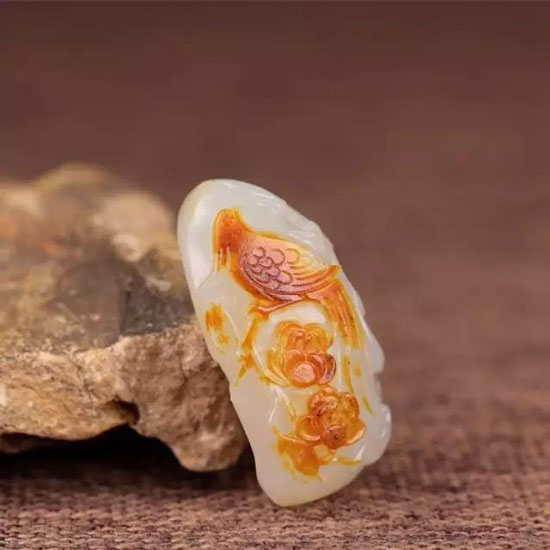The so-called repair type is that when some large pieces of material are used as bracelets or brands, they need to be cut, and the corners can be used. This is called cutting, and the trimmings are sold as individual seeds. So, how to distinguish the Hetian jade repair material?
The concept of the single seed was originally the original cobblestone seed rough. In terms of cutting materials, the real single seed material will be more precious, and the same quality price is higher than the cutting material. Many people in the industry say that the modification is not only the characteristics of the seed material, but also the processing and removal of the flaws.
There is also a roller material. Here, we also classify the roller material as a repair type, that is, use a Qinghai material, a Russian material or a Korean material to be ground into a roller to form a round shape of the seed material, and then make a fake pore, or Plus dyeing.

How to distinguish Hetian jade repair material?
1, look at the type
I believe that the seeds that many people have seen have the largest shape of water droplets and melon seeds. Of course, there are also a lot of brand-shaped and scorpion-shaped ones, but the real natural Hetian jade seed material looks smooth and not round, and The shape of many seeds is not good looking.
There are a lot of Hetian jade in a round shape, and most of these shapes on the market are almost fake. This is the roller seed material, which is cut into small pieces by using a piece of inferior mountain material, thrown into a roller with a matte, and kept stirring. The matte particles round the surface. Sold according to the value of natural seed. Need to remind Yu friends that if the shape of a stone is too ideal and perfect, then all of them are repaired.
2, see the edges and corners
Hetian jade seed material has been weathered and denuded for thousands of years. The river is impacted and the shape is oocyst. If you observe the pebbles yourself, there will be no edges and corners. If you roll the material, it is not the same as every face can be rolled. Under the natural light or under the illumination of the light, you will find that there are still many small faces on the stone surface. This is a rustic mountain. The material is polished into a cobblestone-like trace. Although it is repeatedly polished, it can still see the presence of small blocks and long edges.
3, look at the bump
We observe the seed material, which is uneven on the surface of many seed materials, that is, on one plane, some places are convex, and some places are concave, as shown in the above figure. However, after the trimming, the material is generally convex, and it is too difficult to roll out a pit in a certain place.
4, look at the pores
Look at the pores of sweat, in fact, just like human skin, there are delicate and natural pores. There have been many talks about Tibetan jade. In fact, when you look at the surface of the pebble in the river, you can feel what is the pores of sweat. False lenticels are mechanically smashed, or acid-etched, and always feel less natural. The size of the sweat pores is naturally distributed, and the fake is regularly arranged. If you look carefully, you can always find traces of artificial.
Omani Robe,Dishdasha Omani Robe,Daffah Thobe,Arabic Thobe For Men
fucheng county huaxing garments co.,ltd , https://www.fc-huaxing.com